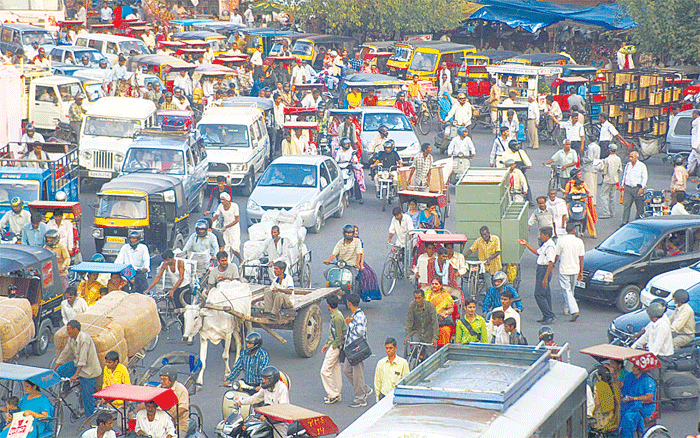India is implementing active measures to combat its ever-growing rise in energy consumption

Nothing could horrify the climate-conscious citizen more than India’s Integrated Energy Policy, which mandates, at minimum, a three to fourfold increase in primary energy consumption, and a five to sevenfold rise in electricity consumption from 2005 to 2031 to maintain an 8 per cent GDP growth. The policy makes coal the primary energy source “till 2031-32 and possibly beyond”. It also stresses augmenting other fossil-fuel resources to feed rising energy consumption – in line with a development strategy that follows the pre-1990 Western model. It mainly relies on the market to promote energy efficiency. It prioritises nuclear power, with a disastrous record in India, over renewables. And it puts climate change considerations at the bottom of its 13 key recommendations.
The supply-driven Policy reflects the ruling elite’s worship of GDPism and its obsession with promoting energy consumption to secure rapid growth irrespective of distribution. Growth in the past two decades largely benefited only the top 10 per cent of Indians and failed to dent mass poverty. An aversion to letting climate considerations slow growth is central to the National Action Plan on Climate Change of 2008, and its 8 Missions: on solar power, energy efficiency, the Himalayas, etc.
GDPism is the main driver of India’s global climate negotiations stand. India is the world’s fourth-biggest greenhouse emitter, but hides behind its poor to refuse any climate-related obligation other than that its per capita emissions – less than half the global average of 4.4 tons (compared with the European Union’s 10-12 and the US’s 20) – won’t exceed those of the rich countries. This reflects an ambition to overcome the legacy of colonial rule and make India a great industrial power.
However, despite flawed policy biases, energy intensity in Indian industry is declining and carbon-free electricity generation is significantly rising. This is less because of the government’s effort than a mix of factors, such as changes in agriculture-industry-services balances, high energy prices, and the spartan lifestyles of the vast majority of Indians, who consume only 9 per cent as much meat as the Chinese and 4 per cent as the Americans.
Services have expanded phenomenally, their contribution to India’s GDP rising from 44 per cent in 1990 to 52 in 2005. Services typically consume only a tenth as much energy as industry. This partly explains why India’s GDP multiplied 2.3 times in 15 years, with a 1.9-fold growth in energy consumption. But there has been a 1-2.5 per cent annual gain in energy efficiency in industries such as iron and steel, cement and paper – driven partially by high energy prices (which are among the world’s highest), and partially by the Bureau of Energy Efficiency.
Also significant is the growing contribution of renewable energy, in particular wind and solar, to electric capacity. The 9.4 percent share equals the ratio in the EU or China, and is more than twice as high as in the US. Renewables have been boosted by purchase obligations in major power-producing states. The result is a lower energy intensity of production (in purchasing-power parity) than China’s and the US’s, and only just higher than the EU’s. Emissions intensity fell by 40 per cent in 1994-2007, prompting the government to announce a further 20-25 per cent intensity cut by 2020.
However, some of the main factors behind low energy/carbon intensity are explained by the fact more than a third of the world’s 1.4 billion poor live in India in wretched conditions. Half the rural people live in biomass and unburnt brick-based houses. Four-fifths cook with woodstoves. Some 45 per cent of homes have no electricity connection. Per capita power consumption is about 600kWh – less than a quarter of the global average. Only 11 per cent of households consume more than 100kWh a month (the US average is 900kWh). There are 12 motorised vehicles per 1,000 people (800 in the US).
This represents a huge development backlog. Yet the challenge of providing modern energy services to the poor can be met in a climate-friendly manner at a modest cost, equivalent to emissions of one ton per capita. For the world’s 1.4 billion poor, this translates into one-quarter or one-third of the EU’s or US’s annual emissions respectively. India’s share will be a third of that. Doing this demands the will to discourage luxury consumption by the rich – car sales are rising at 30 per cent and air-conditioner sales by 50 per cent – mobilising resources to fund public services, and changing distribution of growth.
But the government wants to continue with the present growth model, with some add-ons. One such is a grandiose plan, announced just before the last G20 Summit, to generate 20,000MW of solar electricity by 2022 – the world’s largest solar programme. But this focuses on grid power, which is exorbitant, and will restrict access to electricity. The same money, spent on decentralised and solar home-lighting systems, could produce great results. But a government known for tokenist responses to external pressure won’t easily adopt this course.
Praful Bidwai is Delhi-based columnist and author of a recently published book, “An India That Can Say Yes: a Climate-Responsible Agenda for Copenhagen and Beyond”
Subscribe to Independent Premium to bookmark this article
Want to bookmark your favourite articles and stories to read or reference later? Start your Independent Premium subscription today.

Join our commenting forum
Join thought-provoking conversations, follow other Independent readers and see their replies